Hue
Recognized World Cultural heritage by UNESCO in 1994, Hue was the old capital of Vietnam under the reign of Nguyen dynasty from 1882 to 1945. This city is considered as an alive museum. The Citadel, the tombs of the Emperors, Celestial Lady pagoda etc tell us the history of the last feudal dynasty of Vietnam. A boat trip on Perfumes river will disorient us before the beauty of nature. The traditional villages, the houses covered by the gardens, the girls in long dress after the school make a perfect picture of the human life in harmony of the nature and the vestiges.
Danang 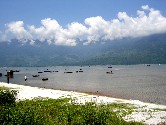
The first capital of Cham kingdom, strategic military base during the wars, but this modern city is surrounded by quintessence of nature. From Clouds pass, we admire the white sandy beaches spreading tens of kilometers. The Marbles mountain beside Non Nuoc beach makes us feel the beauty of the harmony of five universal elements. The archaeological museum tells us the glorious history of a ruined kingdom. Non Nuoc and My Khe, are also the marvelous beaches for the sea bathes.
Hoi An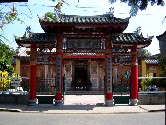
This charming city was recognized World Cultural heritage by UNESCO in 1999, Hoi An was a animated commercial port in 17th and 18th centuries, when the Chinese and the Japanese had their quarters and the Portuguese and Dutch merchants came to trade. In spite of a modern life and a tourist center, we are allured by the old quarters, Japanese bridge and wooden houses covered by mossgrown roof. After the sunset, we will have the occasion to live the time of our ancestors when all the city is lit by the lanterns. A boat trip on Thu Bon river to discover the handicraft villages, or beach breaks at Cua Dai beach are also unforgettable souvenirs of our trip.
My Son 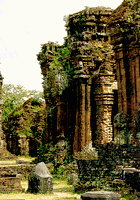
A complex of temples and sanctuaries in ruins built in a basin, 60 kms approximately from Hoi An. The old religious capital of the Cham kingdom from 4th to 12th centuries, offers to us a new outline on the glorious history of this ignored civilization. The construction of the towers remains still the mystery. People compared beside My Son with the vestiges of the other great civilizations of the Southeast Asia, such as Angkor Wat, Borobudur, Vatphu or Pagan. UNESCO recognized this site the World Cultural heritage in 1999.
Nha Trang 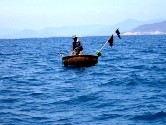
Recognized one of 29 best bays of the world, the sun is shining there all the year with the average temperature of 23°C. Nha Trang is still called the Mediterranean beach of Vietnam with hundreds of historic buildings and splendid landscapes. Nha Trang profits largely from its topography: the sea, the islands, the mountains and the deltas make an attractive area. An infinite chain of mountains is located in the west of Nha Trang and shelters a large variety of birds and animals. A famous speciality of Nha Trang : swallow nests made of the swallows saliva and the algae, precious ingredients in the preparation of royal dishes. Its coral reefs make of Nha Trang a dreamed place for the diving-tours to discover a fabulous nature. Nha Trang is also the old Cham capital, Ponagar tower bears witness the last time of this kingdom.
Dalat 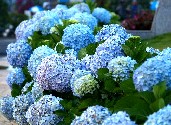
With approximately 308km from Ho Chi Minh-City, the capital of the province of Lam Dong in the highlands of the Center, Da Lat was found in 1897 by well-known doctor Alexandre Yersin - the author of the vaccine anti-plague. But it was the native land of an old tribe (Lats people), Da Lat means the country of Lats. With the altitude of 1500 m, it deserves the name “the city of the eternal spring” because the average temperature in winter never goes down below 10ºC, and in summer, it does not exceed 25ºC. Thanks to this ideal climate, Dalat flowers all the year. It is also famous for its water falls, its lakes, its valleys of flowers, its green meadows and its pine forests. The plateau of LangBiang, the shelter of the ethnos groups: Co Ho, My, Chu Ru, Lats, they still realize the autarky, the horticulture, the coffee plantation and the breeding of domestic animals. The visits of their home let’s us know the life of the first inhabitants of the region .
Central Highlands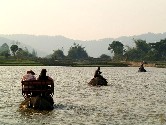
The red soil covered by the coffee plantations, by rubber trees from Kontum to Lam Dong, lengthens on the Truong Son Cordillera, is the country of the ethnos groups of Malayo-Polynesian linguistic group. Thanks to the identification of their dialects and their habits, the ethnological studies show that M’nong, Jarai, Sédang and Edé are the descendants of the tribes coming from Malaysia and Indonesia. A stroll on elephant back to Lak lake or from the Don village will be an effective exercise, of course, it is not as comfortable as an air-conditioned car, but very good for health!
|

